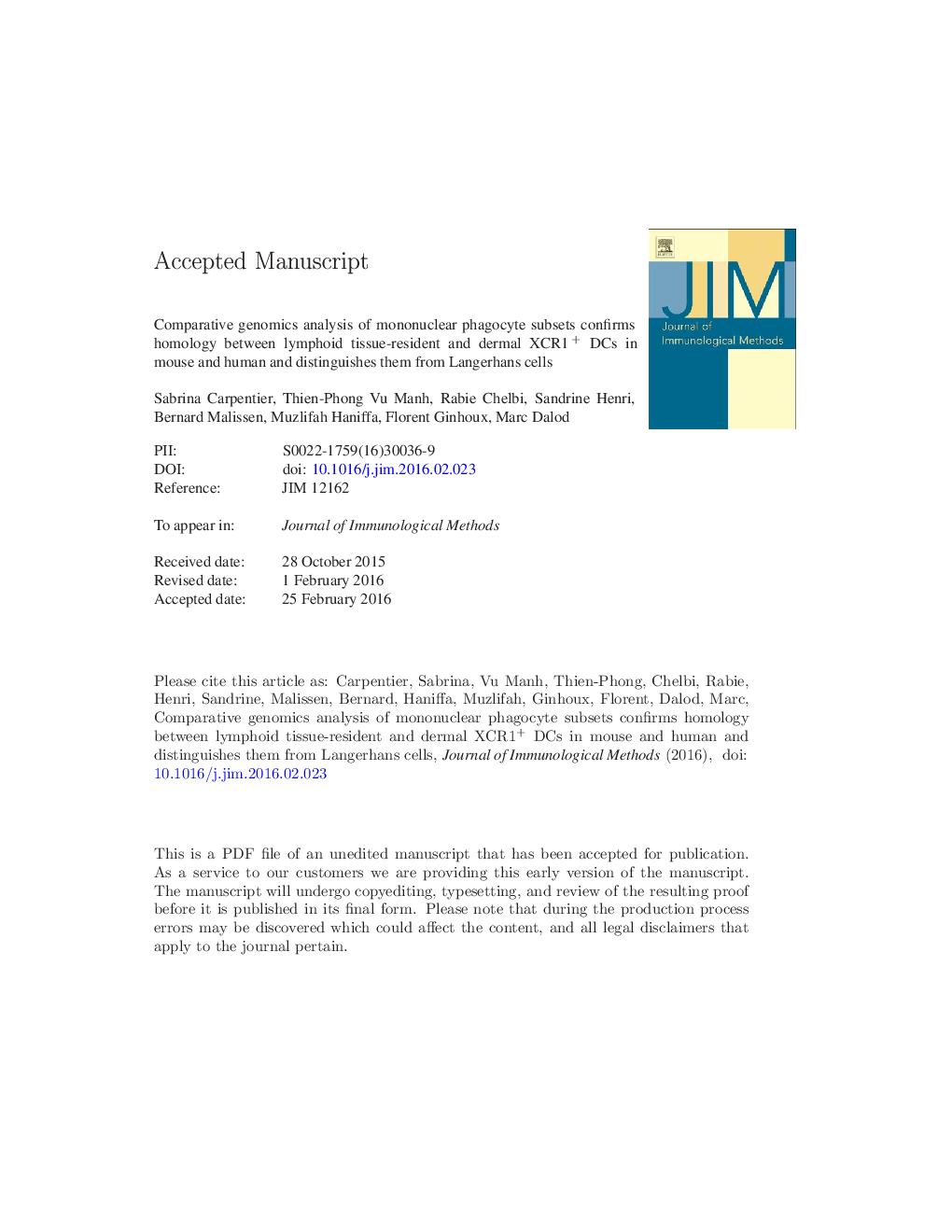| Article ID | Journal | Published Year | Pages | File Type |
|---|---|---|---|---|
| 8417204 | Journal of Immunological Methods | 2016 | 26 Pages |
Abstract
Dendritic cells (DC) are mononuclear phagocytes which exhibit a branching (dendritic) morphology and excel at naïve T cell activation. DC encompass several subsets initially identified by their expression of cell surface molecules and later shown to possess distinct functions. DC subset differentiation is orchestrated by transcription factors, growth factors and cytokines. Identifying DC subsets is challenging as very few cell surface molecules are uniquely expressed on any one of these cell populations. There is no standard consensus to identify mononuclear phagocyte subsets; varying antigens are employed depending on the tissue and animal species studied and between laboratories. This has led to confusion in how to accurately define and classify DCs across tissues and between species. Here we report a comparative genomics strategy that enables universal definition of DC and other mononuclear phagocyte subsets across species. We performed a meta-analysis of several public datasets of human and mouse mononuclear phagocyte subsets isolated from blood, spleen, skin or cutaneous lymph nodes, including by using a novel and user friendly software, BubbleGUM, which generates and integrates gene signatures for high throughput gene set enrichment analysis. This analysis demonstrates the equivalence between human and mouse skin XCR1+ DCs, and between mouse and human Langerhans cells.
Keywords
FDRmoDCsGSEALCSDMPSXCR1nESdDCsPCABioinformaticsGene Set Enrichment AnalysisPrincipal component analysisDendritic cellsLangerhans cellsMonocyte-derived dendritic cellsDermal dendritic cellsmononuclear phagocytesMacrophagesMonocytesMACfalse discovery rateMPsnormalized enrichment scoreSkinComparative genomics
Related Topics
Life Sciences
Biochemistry, Genetics and Molecular Biology
Biotechnology
Authors
Sabrina Carpentier, Thien-Phong Vu Manh, Rabie Chelbi, Sandrine Henri, Bernard Malissen, Muzlifah Haniffa, Florent Ginhoux, Marc Dalod,
